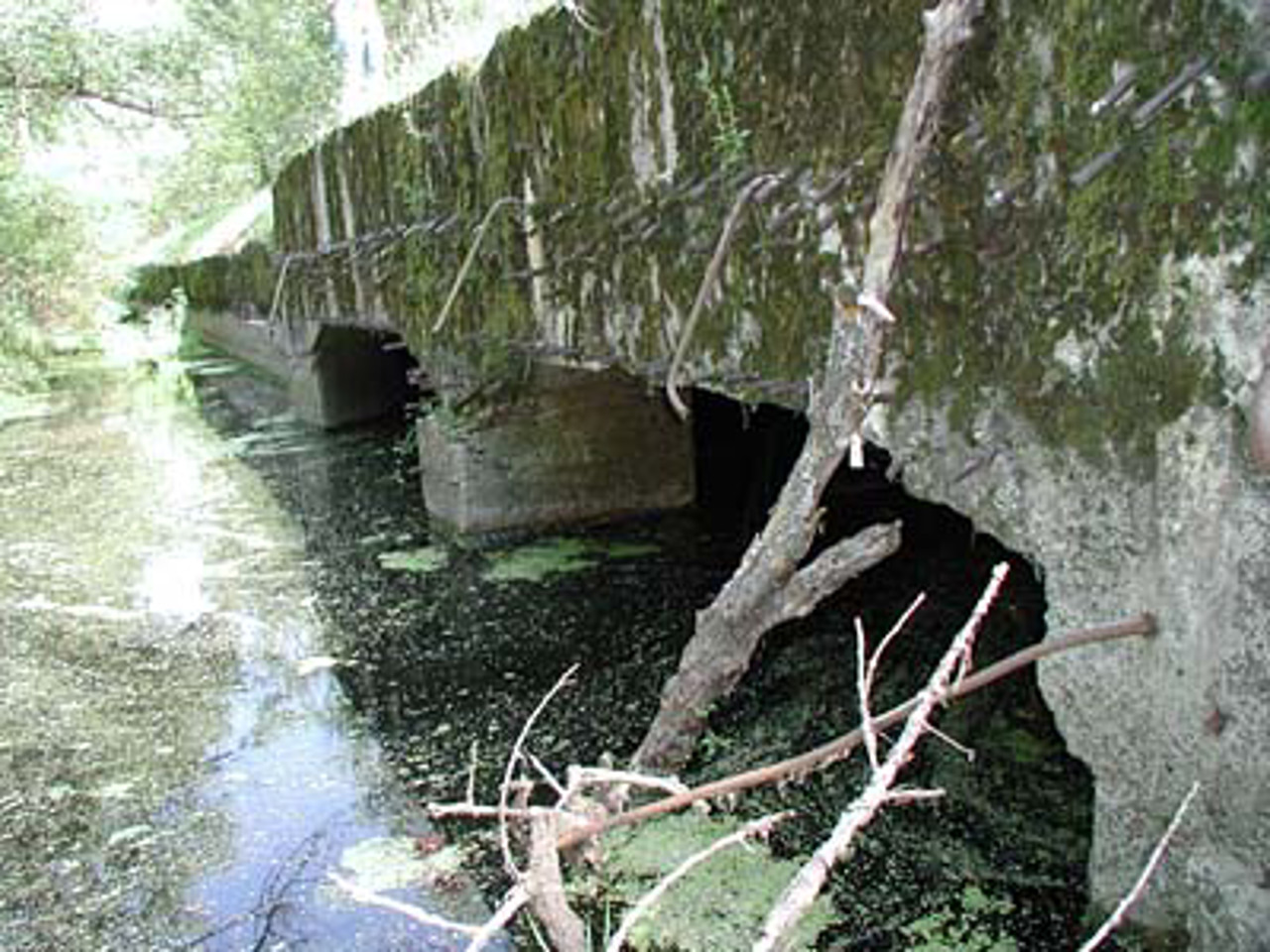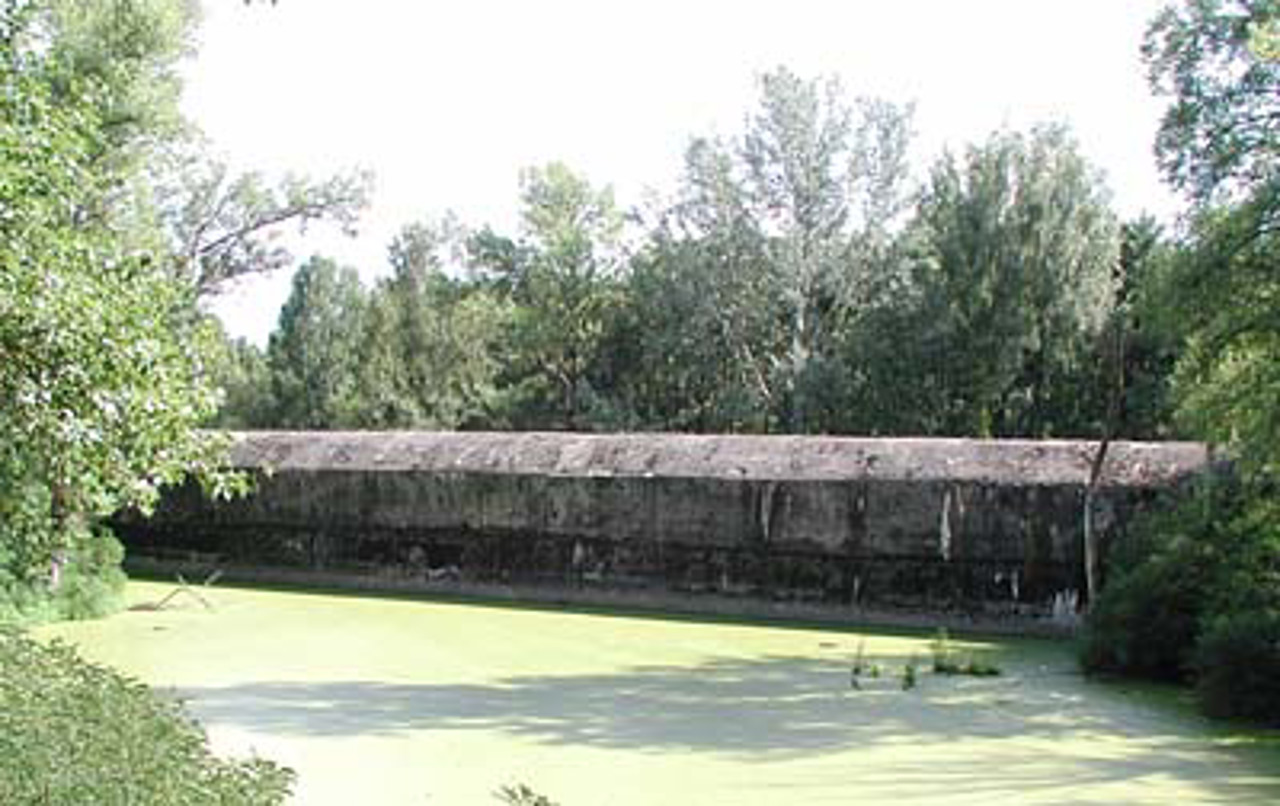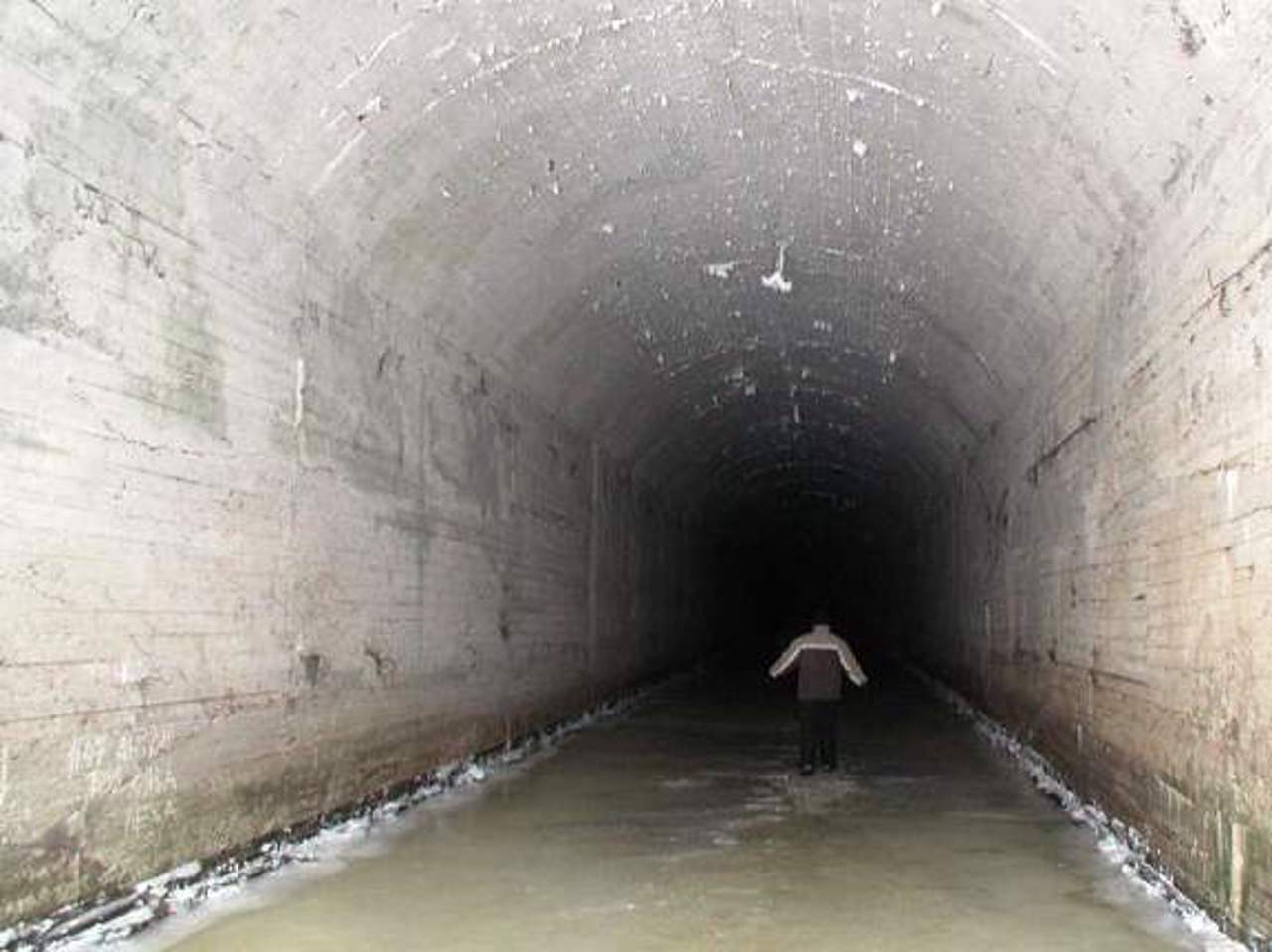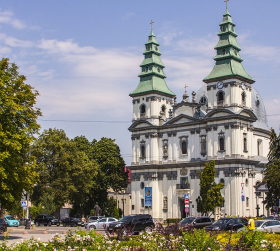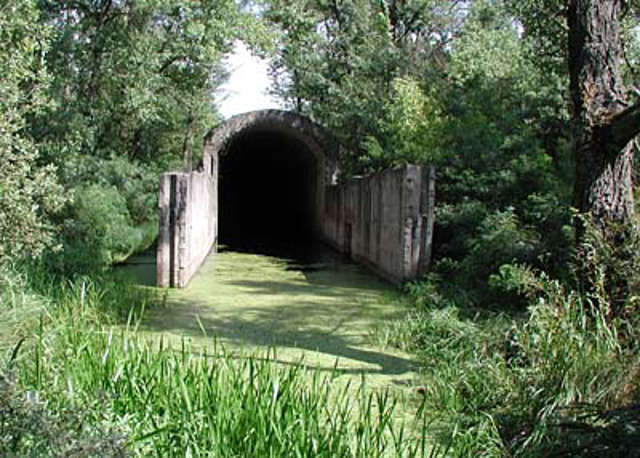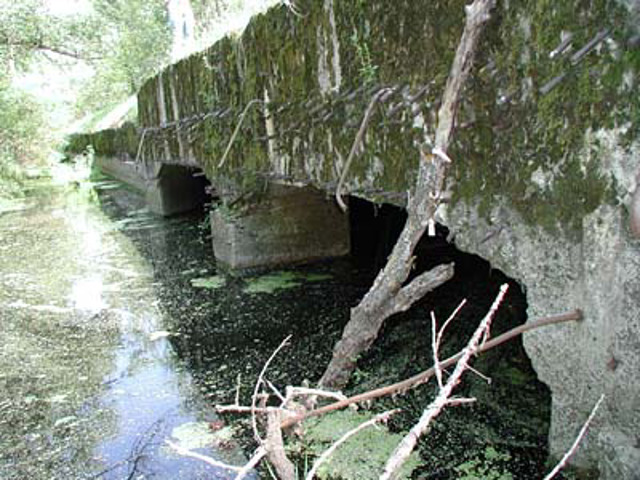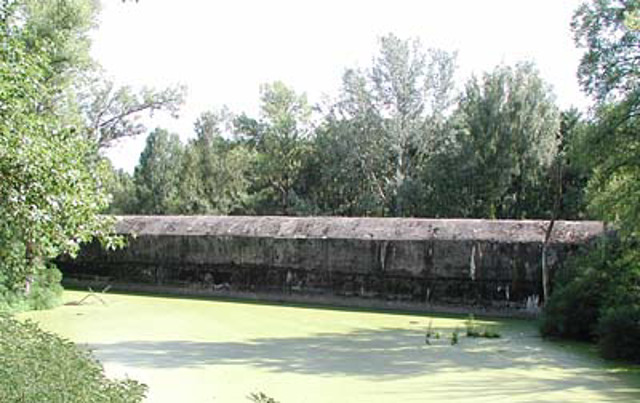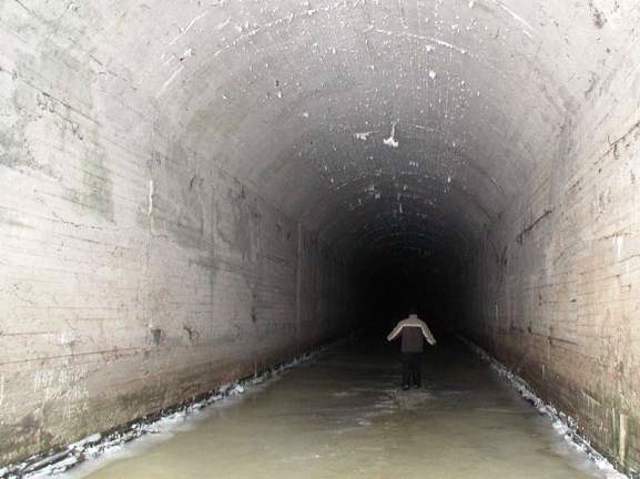Functional temporarily unavailable
Stalin Metro, Kyiv
Castle / fortress
General information about Stalin Metro (Kyiv)
The southern tunnel under the Dnipro is one of the objects of the so-called "Construction No. 1", as mentioned in the secret documents, a project of an underground transport system that duplicates the railway bridges across the Dnipro in the Kyiv region.
Two railway tunnels to the south and north of Kyiv (now within the city limits) were intended to ensure reliable, safe and secret transfer of troops and cargo between the right and left banks of the Dnipro. The decision to start "Construction No. 1" was made in 1938. Since the initiative belonged to Joseph Stalin, and the construction was carried out by metro builders, the object was later nicknamed "Stalin metro".
The total number of involved workers and employees was from 5 to 10 thousand peop ...
The southern tunnel under the Dnipro is one of the objects of the so-called "Construction No. 1", as mentioned in the secret documents, a project of an underground transport system that duplicates the railway bridges across the Dnipro in the Kyiv region.
Two railway tunnels to the south and north of Kyiv (now within the city limits) were intended to ensure reliable, safe and secret transfer of troops and cargo between the right and left banks of the Dnipro. The decision to start "Construction No. 1" was made in 1938. Since the initiative belonged to Joseph Stalin, and the construction was carried out by metro builders, the object was later nicknamed "Stalin metro".
The total number of involved workers and employees was from 5 to 10 thousand people. Overground tunnels and railway embankments were built. Over 240 meters of the Southern Tunnel (pipe) with a diameter of 6 meters was passed by hikers near the Dnipro south of Kyiv, in the area of Zhukiv Island. Construction of the northern tunnel began later.
With the beginning of the Second World War, in 1941, all work was stopped, and machinery and equipment were flooded in the Dnipro. After the war, the object was considered unprofitable and construction was not resumed.
Currently, the South tube of the "Stalin Metro" on Zhukiv Island is one of the most accessible and spectacular structures of "Construction No. 1". It is a reinforced concrete tunnel with a descent towards the Dnipro. The western end rises above the ground almost completely, the eastern end – with its outer surface only a dozen centimeters above the lake level (it goes under the water). The total length is 600 meters. The tunnel is flooded, in winter it is possible to walk on ice from the western entrance to the intermediate entrance.
Also available are the remains of a tunnel and a headstone at Osokorki. The caisson of the Northern Tunnel (the so-called "Concrete Ship") has been preserved in Obolon.
Південний тунельний перехід під Дніпром – один із об'єктів так званого "Будівництва №1", як значився у секретних документах, проєкт підземної транспортної системи, що дублює залізничні мости через Дніпро в районі Києва.
Два залізничні тунелі на південь і на північ від Києва (зараз у межах міста) призначалися для забезпечення надійного, безпечного і таємного перекидання військ і вантажів між правим і лівим берегами Дніпра. Рішення про початок "Будівництва №1" було прийняте в 1938 році. Оскільки ініціатива належала Йосипу Сталіну, а будівництво вели мтеробудівці, згодом об'єкт прозвали "Сталінським метро".
Загальна кількість задіяних робітників та службовців становила від 5 до 10 тисяч осіб. Були споруджені надземні тунелі та залізни ...
Південний тунельний перехід під Дніпром – один із об'єктів так званого "Будівництва №1", як значився у секретних документах, проєкт підземної транспортної системи, що дублює залізничні мости через Дніпро в районі Києва.
Два залізничні тунелі на південь і на північ від Києва (зараз у межах міста) призначалися для забезпечення надійного, безпечного і таємного перекидання військ і вантажів між правим і лівим берегами Дніпра. Рішення про початок "Будівництва №1" було прийняте в 1938 році. Оскільки ініціатива належала Йосипу Сталіну, а будівництво вели мтеробудівці, згодом об'єкт прозвали "Сталінським метро".
Загальна кількість задіяних робітників та службовців становила від 5 до 10 тисяч осіб. Були споруджені надземні тунелі та залізничні насипи. Прохідниками під Дніпром на південь від Києва, в районі Жукова острова, було пройдено понад 240 метрів Південного тунелю (труби) діаметром 6 метрів. Північний тунель почали споруджувати пізніше.
З початком Другої вітової війни, в 1941 році, усі роботи припинили, а техніку та обладнання затопили у Дніпрі. Після війни об'єкт вважали нерентабельним і будівництво не відновили.
Наразі Південна труба "Сталінського метро" на Жуковому острові - одна з найдоступніших і видовищних конструкцій "Будівництва №1". Є залізобетонним тунелем зі зниженням у бік Дніпра. Західний кінець височить над землею майже повністю, східний – зовнішньою поверхнею лише на десяток сантиметрів над рівнем озера (виходить під воду). Загальна довжина - 600 метрів. Тунель затоплений, взимку можна пройти льодом від західного до проміжного входу.
Також доступні залишки тунелю та оголовок на Осокорках. На Оболоні зберігся кесон Північного тунелю (так званий "Бетонний корабель").
Practical information about Stalin Metro (Kyiv)
Last update
5/23/2025
| Categories | Castle / fortress |
|---|---|
| Date of foundation | 1938 |
| Address |
Stolychne highway, Zhukiv island
Kyiv |
| Coordinates |
50.3356002° N, 30.5777407° E
|
| Additional services |
Аccessibility information
Have you visited Stalin Metro in Kyiv?
Add practical or descriptive information, photos, links
What to see, where to go next?


